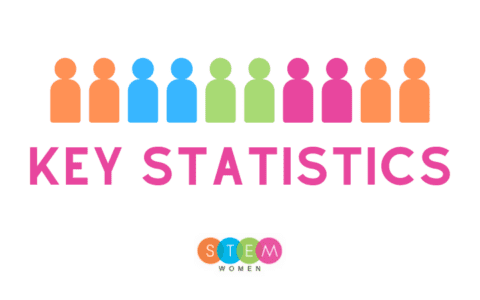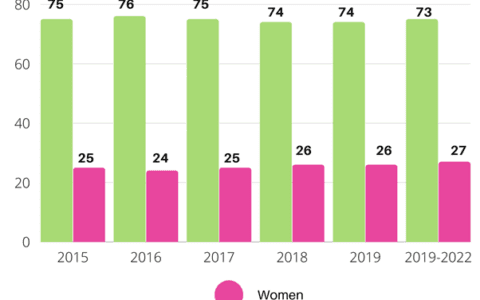Positive Action and Positive Discrimination: What can your company do to lawfully encourage more female applicants?

What is the difference between positive action and positive discrimination? What is the best course of action for businesses when it comes to gender balance? These are questions that many employers will be asking themselves, especially in STEM fields. Many companies are coming under increasing scrutiny for a lack of gender diversity in their teams.
Today, nearly three-fifths of UK organisations have a diversity strategy, most commonly used in monitoring recruitment and training interviewers, according to Randstad. There are many reasons for this, from the new law on publishing the gender pay gap, to studies on business performance, gender diversity is now hugely important.
However, if you’re still a little confused about the difference between positive action and positive discrimination, or you simply want to find out what your company can lawfully do to encourage more female applicants, have a read of our guide and take the next steps towards solving the gender imbalance in your company.
What is the difference between positive action and positive discrimination?
In simple terms, when defining the difference between positive action and positive discrimination, it’s best to start with what the law dictates. Positive action is legal, whereas positive discrimination is illegal. Let’s take a closer look at both terms:
Positive Discrimination
When striving for gender balance in recruitment, it is illegal to treat a candidate applying for a role more favourably on the grounds of the nine ‘protected characteristics’ – race, gender, disability, marital status, religion/belief, pregnancy, sexual orientation and gender reassignment. Companies must abide by these laws unless there is a genuine occupational requirement for not doing so.
It would be unlawful for an employer to recruit a candidate because they have a relevant protected characteristic, rather than because they are the best candidate for the job. It is also against the law to set out a quota in which an employer would promote a set number of people just because they have protected characteristics.
Example:
A large department store employs eight senior managers, but only two of them are women. The next time a vacancy arises, the store tries to address this underrepresentation by only interviewing female applicants, regardless of whether they meet the criteria for the post. This would be positive discrimination, and therefore unlawful.
Positive Action
It is legal for an employer or recruiter to create an action plan to achieve a more balanced workforce. Defined by Thomson Reuters Practical Law, positive action is a “permitted action by an employer to assist protected groups which are disadvantaged or under-represented in a particular job. It is a limited exception to the prohibition on discrimination in employment.”
The Equality Act of 2010 states that employers can take positive action if they ‘reasonably think’ that women suffer a disadvantage connected to their sex; women have needs that are different from the needs of men, or participation by women in an activity is disproportionately low.
For companies to ‘reasonably think’ that women are underrepresented in their business, they will need to provide some information or evidence to indicate that those conditions exist. This could be through qualitative evidence, statistics, looking at workforce profiles, or making comparisons to other employers in similar sectors.
Example:
A tech company has a vacancy for one of its developer jobs. Every other job of this kind at the company is filled by men. The company, therefore, conducts a recruitment initiative to encourage more female applicants to apply for the role. They decide to attend a STEM Women event which is targeted at female STEM students and graduates that are looking to start careers in the industry. Following the event, they have a good number of female candidates applying for the job, as well as some male applicants. They narrow it down and find that two, a man and a woman, are equally fit for the job. The tech company could decide to take positive action and give the job to the woman. But they couldn’t offer the job to the woman if the man could do the job better than her.
How do I attract job applicants from a particular group without breaking the law?
Before you reach the recruitment stage, however, many companies may be confused about what actions they are allowed to take when advertising roles or attracting candidates to their vacancies.
When striving for gender balance in your company, there are many things you can do to legally target and attract the ‘desired’ people for your jobs.
- Advertise job vacancies in a publication that has a high readership of a group with a desired protected characteristic needed to balance your workforce.
- Work with certain societies that are known to be well represented with your desired candidates.
- Attend certain events that are targeted towards female candidates, for example STEM Women events are targeted specifically at female STEM students who are looking to start careers in the industry.
- Sponsor an award that celebrates diversity and inclusivity.
- Focus marketing on campuses or subjects with higher percentage female students – this is something STEM Women actively do when organising careers events.
- Reword your job descriptions to remove any gender bias.
- You could start a referral bonus scheme.
However, even though companies are allowed to encourage candidates from certain under-represented groups, the recruitment and selection process must then be non-discriminatory and follow the laws of positive action.
In general, when recruiting or promoting candidates with a protected characteristic, the company must ensure that they abide by three main guidelines during the recruitment process:
1. The candidate must be as qualified as the other applicants.
This is defined as ‘equal merit’. Companies should establish a set of criteria against which all candidates will be assessed when applying for a job. These criteria can take into account overall ability, professional experience and competence, alongside relevant formal or academic qualifications and specific qualities required to carry out the job.
Example:
A leisure centre has advertised a job as the manager of the facility and narrowed down the applicants to one woman and one man. The man has completed a degree in Leisure Management but has little practical experience. The woman has no formal qualification but has several years’ experience working in leisure centres. After interviewing both candidates, the employer decides that both have the skills to do the job equally well, but in different ways, due to their different skill sets. Because the candidates are of equal merit, the recruiter may voluntarily use the positive action provisions when choosing between candidates and opt to employ the woman because all the other senior positions at the leisure centre are held by men.
When an employer is faced with making a choice between two or more candidates who are of equal merit. Positive action allows employers to take into consideration whether one is from an underrepresented group or otherwise disadvantaged within the workforce. This is sometimes called either the ‘tipping point’ or a ‘tie breaker’.
Companies will also need to ensure that the set criteria does not indirectly discriminate against people who share the protected characteristic. This could be a requirement that staff must work shift patterns and be on-call at certain fixed times, which may put some women at a disproportionate disadvantage because they could more likely be responsible for childcare issues. This would be unlawful indirect discrimination, unless it could be shown that the need for these work patterns could be objectively justified.
2. The employer does not have a ‘policy’ of treating candidates with protected characteristics more favourably when recruiting.
Positive action provisions ensure that employers must not adopt policies or practices designed to routinely favour candidates with certain protected characteristics, even where there is evidence of underrepresentation. All qualified candidates must be considered for the role on their individual merits. If one candidate is superior, or better qualified, the employer should offer the position to that candidate.
However, this does not prevent an employer from having a routine policy of being prepared to use positive action where it is appropriate.
Example:
A local authority is looking to diversify its workforce and therefore implements a large recruitment drive with the goal of creating a large pool of ‘qualified’ candidates from which it can cherry pick those with the relevant protected characteristics. To do this it sets a very low pass mark for an assessment to make sure that the majority of candidates pass. Choosing someone with a particular protected characteristic, over another candidate that is better qualified would be seen as unlawful discrimination under the positive action provisions.
3. The favourable treatment is due to the workforce being proportionally unbalanced when compared to similar sectors.
When considering using positive action provisions, it is important that the employer balances the necessity and seriousness of the disadvantage suffered or the extent to which people with a protected characteristic are underrepresented, against the impact that the proposed action may have on other people.
It is helpful for the employer to weigh up whether they could achieve the same goal using different actions that are less likely to result in the less favourable treatment of other candidates.
Example – A small voluntary organisation has five employees, who are all women. The organisation acknowledges that it would prefer to have a gender-balanced workforce but feels that, because of its size, it would not be proportionate to use positive action provisions in recruitment to address this, especially as men are well represented in similar organisations throughout the sector.
We Can Help!
At STEM Women, we can help companies actively source, interview and recruit top female talent looking to enter into the STEM workforce. We have grown a large community of students and recent graduates who identify as women or non-binary through developing relationships with university departments, social influencers and word of mouth.
Our STEM Women communities meet graduate employers at networking events that take place across the UK, Ireland, Benelux Region, Germany, Australia and New Zealand. Over 2,000 attendees signed up to our most recent event, which saw 40 top exhibitors take part. If you’d like to join over 300 companies exhibiting at our events, visit our events page and request an exhibitor’s event guide.
From sponsorship and stands at careers events, to job boards and recruitment consultants that specialise in sourcing the very best talent, get in touch with us today for more information. Or follow us on LinkedIn, Facebook and Twitter to stay up to date with all the latest news and event information.







